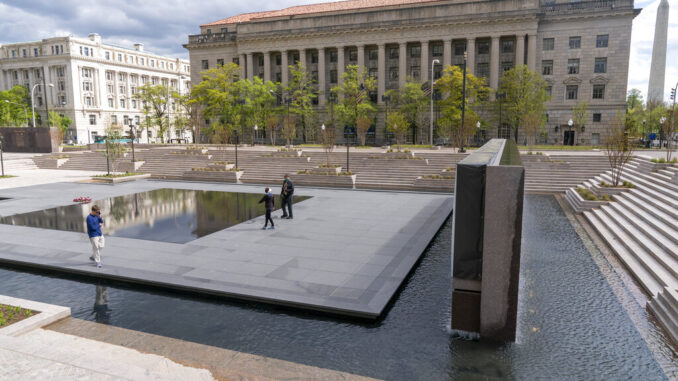
Many people vividly remember Denzel Washington’s riveting performance in the movie “Glory” about the 54th Massachusetts Infantry Regiment, one of the first African-American regiments in the Civil War.
Not many people realize the segregation which still existed fifty years later when America entered World War I in Europe to help the Allies defeat the Kaiser and Germany.
There were three black combat regiments in WW1. The 369th, nicknamed the Harlem Fighters; the 370th, nicknamed by the Germans as the Black Devil, and the 371st which had no nickname but was led by my grandfather, Hubert Teer of Durham.
The 371st was comprised of black draftees from South Carolina and others from Georgia, Florida, and North Carolina. The white officers were mainly from the south.
They trained at Camp Jackson in Columbia S.C., which is always hot as hades in the summer. The 371st was widely considered to be the best drilled and trained unit ready for combat.
The 371st was sent to the Western Front in April of 1918 nine months before the armistice was signed. It placed under command of the French Army for two reasons: the French needed men and it was felt the French would accept the black soldiers and work better with them on the battlefield.
In June, the 371st was sent to the forward trenches in Verdun and stayed there until September before they were called up to assist in the offensive in Champagne. During the next three months, 1065 men of the 371st were either killed or wounded out of a total of 2384 soldiers.
The percentage of both dead and wounded among the white officers was greater than the black men. The wounded officers continued to fight until exhaustion, as did the black soldiers under their command.
The regiment was awarded numerous Distinguished Service Crosses, Croix da Guerre and Purple Hearts. In 1991, the Medal of Honor was awarded posthumously to Corporal Freddy Stowers of Anderson, S.C.. My father made the trip to Anderson to meet with his widow to give her the news and spent the good part of an afternoon reminiscing about how her husband and his father had served our nation together three quarters of a century prior.
Grandpa Teer won the Distinguished Service Cross, Purple Heart and the French Croix among others. He never talked much about this time in France, much like most veterans from any war who have seen and experienced the horrors of war. However, the records I have seen said he was wounded by shrapnel from a German shell but continued to lead his men and lost a lot of blood until ordered to seek medical help.
He did say he often would be in the trenches next to the African-American soldiers and they all would just look up in the sky to watch the aerial dogfights involving biplanes from both sides, hoping the Allies would win soon so they could all go home in one piece to their loved ones.
My mother and father were in France in the early nineties and took a side trip to the battle site where the 371st fought and my grandfather was wounded. They had a guide and they spent hours looking for it to no avail. They were heading back to Paris when my mother suddenly told the driver to turn down an old road she caught out of the side of her eye.
The road took them to a monument dedicated to the 371st far away from the heavily-traveled thoroughfares. The monument had a chunk of it taken out from a mortar shell during World War II twenty-five years later. World War I, then known solely as “The Great War,” obviously was not “the war to end all wars” as many believed it would be at the time.
The people in the local village took great pride in maintaining it so people would never forget what the 371st did to save their forebears.
Mom believed her dad guided her to turn on that road. Corporal Freedy Stowers and the brave American patriots of the 371st no doubt had a hand in it as well.
Russ Barringer lives in Durham.
